One of the best known and earliest examples of data visualization was a flow map devised by a French civil engineer called Charles Joseph Minard in 1869, to better learn how Napoleon’s troops suffered a setback in the disastrous Russian campaign of 1812. The flow map used two dimensions to portray the number of troops, temperature, longitude and latitude, distance of travel, and location, corresponding to certain days. Since then, the art of data visualization powered by advanced technologies has grown dramatically over the decades and evolved into a fine art of science that has today made it a crucial part of informed decision making, in both the business and scientific world.
Data Visualization is a visual representation of large volumes of data in an easy-to-understand format. It translates information into a visual context like a map or graph, to make data easier to understand for the human brain and glean valuable insights. It presents data and the concepts represented by it in a universal manner and make it easier for the decision-makers to identify patterns, outliers, and trends in large data set, thereby vastly reducing the cluttering of data. Once only presented in a graphical manner, data visualization today offers limitless opportunities for presenting it in the way one likes it.
Data Visualization: A Critical Part of Data Analysis
Data Visualization’s importance in recent years has grown to such an extent that it has become vital for almost every career. It has become a critical part of the wider data presentation architecture (DPA) discipline which identifies, locates, manipulates, formats, and delivers data in the most effective way. As businesses look to accumulate massive amounts of data to gain critical insights, it plays a vital role in big data projects. It also helps data scientists, writing advanced predictive analytics or machine learning algorithms, to visualize the outputs, monitor results, and ensure the models are working as they should.
Data visualization also offers tremendous business value. Some of the most remarkable benefits that this easy-to-understand visual representation of data offers include:
- Helps to analyze data swiftly and efficiently, and make better-informed decisions, based on the data.
- Help to comprehend data to gain valuable insights faster and communicate them better.
- Makes it easy to witness how independent variables identify one another. This will help people to see trends, understand the frequency of events, and finally, track connections between operations and performance.
- Helps in assessing trends over time and make accurate predictions about where the situation was and where it can potentially go.
- Help understand the frequency at which customers purchase and when they buy. This, in turn, offers insight into how potential new customers will behave and react to different marketing and customer acquisition strategies.
- Helps examine markets by taking the information from different markets and prise-out critical insights about which kind of audiences the focus should be on, and which kind should be avoided. This way, businesses will get a clearer idea of the kind of opportunities present within the focus markets.
- Helps obtain information quickly with data clearly displayed on a functional dashboard, assess and pinpoint areas that may or may not need action, and act and respond to findings swiftly and avoid making mistakes.
Overall, data visualization, with its interactive visual representations of data leaves a positive impact on businesses’ decision-making processes. It can interpret data in graphical or pictorial forms, and identify patterns faster and better. Some experts have termed its ability to influence the executive’s decision-making process as closing the ‘last mile’ gap.
However, data visualization will work well as long as the data is gathered, sorted out, and analyzed properly and efficiently. If done the right way, it can provide accurate insights and trends that are enlightening. Else, it can be a disaster that will end up confusing the audience. More importantly, its value can get even better if it provides proper clarity, intuitiveness, insightfulness, gap pattern, and trending capability in a collaborative enabling manner that meets the decision requirements of businesses.
Conclusion
Since the human brain is not well-equipped to collect and tap into huge mounds of raw, unorganized information and convert it to something that is useful and insightful, it makes sense for businesses to align their requirements with Altusmeus, a global niche IT talent acquisition provider. This will help them to identify patterns and trends better, gain insights, and make better decisions faster.
Altusmeus services industry verticals for information management, big data, cloud computing, digital enterprise, mobile computing, human capital management, and next-generation infrastructure skills.





